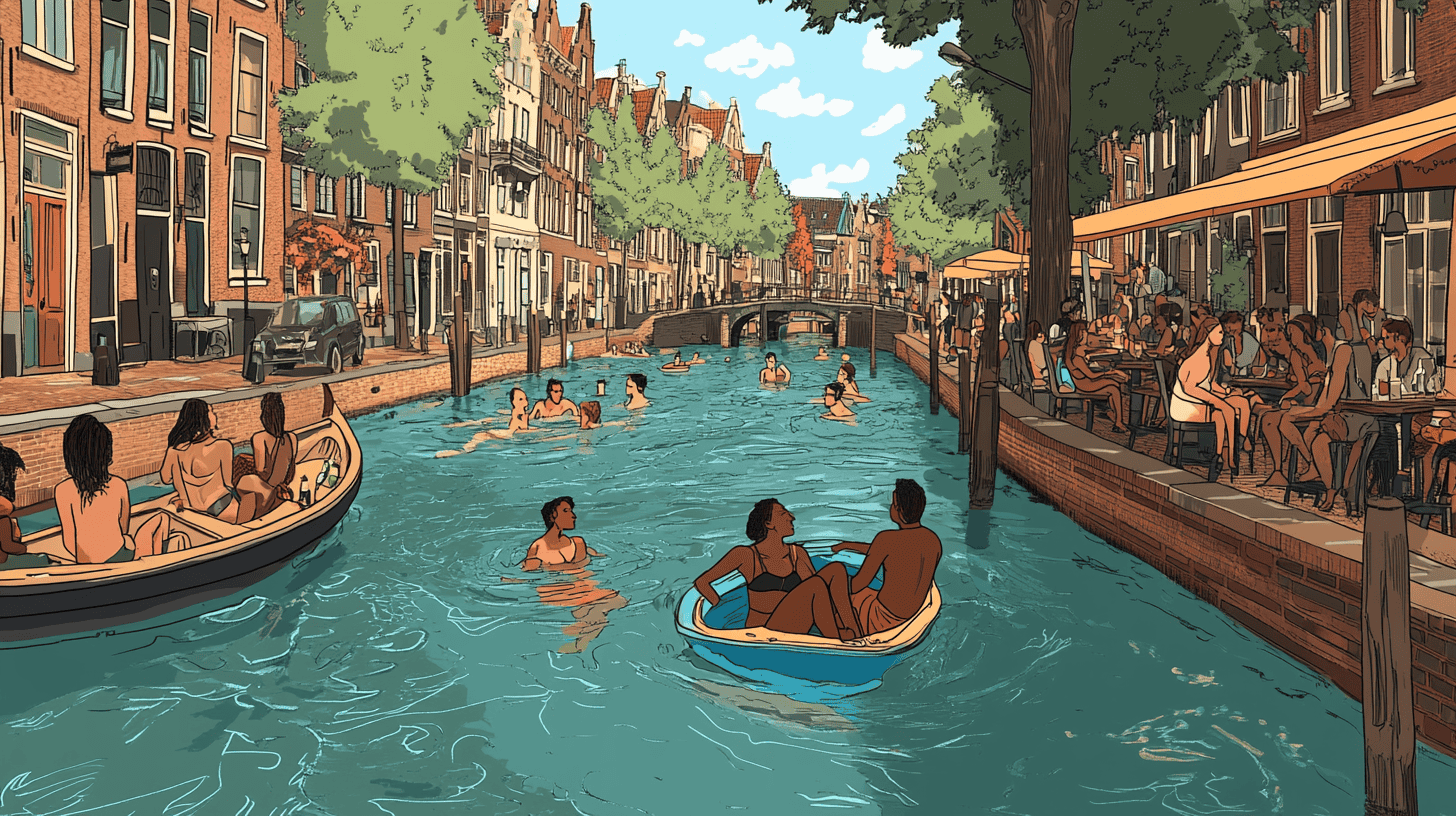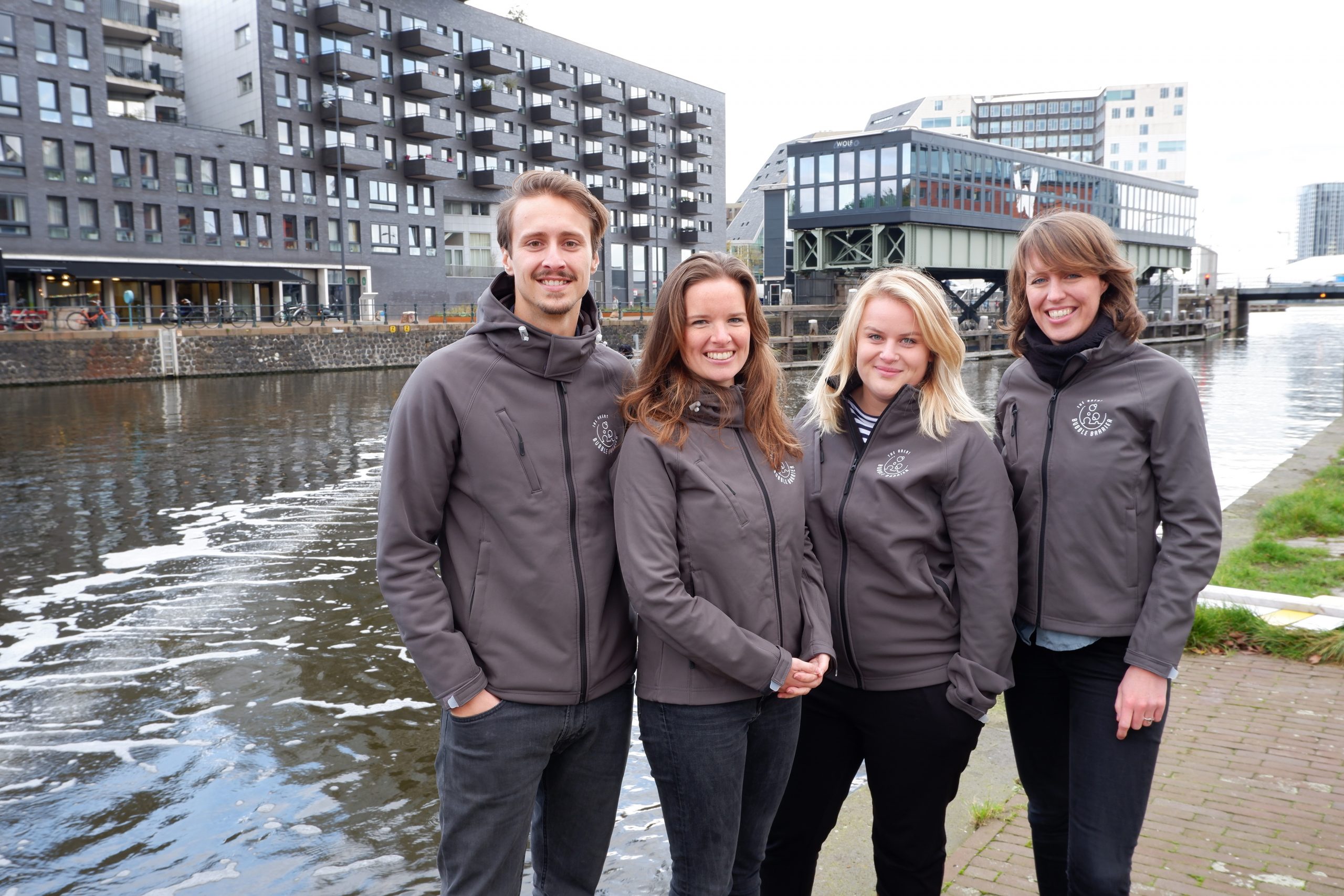
As I’ve mentioned in previous articles, the summer brings with it the wonderful spectacle of the ‘outside phenomenon’, that worldwide societal trend, of doing everything outside. The Netherlands is of course no outlier, in fact, I’d say it is a prime example of such a happening. There’s something magical about those sun-soaked days that lure us all to the water’s edge. Sipping an Aperol by the canal, paddleboarding with friends, setting off on a boat trip, and yes, even taking a spontaneous dip.
Yet, as you enjoy the refreshing Dutch waters, one can’t help but hear the intrusive thought that whispers, “What exactly am I swimming in?”
The Paris Olympics have recently sparked conversations about the cleanness of city waters, not just the Seine but our canals too. Less than 1% of Dutch surface water meets the ‘good’ quality standard, according to a report by Natuurmonumenten. In Amsterdam alone, 60,000 kilograms of plastic and 12,000 bikes from the canals are fished out each year.
So, what are we doing to keep our canals decent? It turns out, we’re using some seriously cool tech. Today, (and of course with the pun intended) let’s dive into the details!
Bubbles
The Great Bubble Barrier has been an innovative game-changer in capturing plastic waste before it reaches the ocean. With projects in Amsterdam, the province of Friesland, and recently in Portugal, the barrier uses a 60-meter pipe at the bottom of the canal, creating a curtain of bubbles that directs waste to a collection platform. Since its debut in Amsterdam in 2019, the barrier has proven effective in tackling plastic pollution in a very original way.

Aqua-drones
Reader, meet RanMarine’s aqua drones, the WasteShark and MegaShark. These aquatic vacuum cleaners can collect up to 500 kg of floating debris daily. WasteShark is perfect for narrow canals and harbors, while MegaShark tackles harmful blue-green algae, protecting aquatic ecosystems and human health.
Nature’s purifiers
Zwolle too, a has embraced a green solution to water purification. A pilot project within the city’s Polymer Science Park has created a device made out of a filter made from the helophyte plant and black alder trees which work together to clean groundwater naturally. The plant roots draw contaminated water into the filter, where bacteria break down pollutants. This eco-friendly method eliminates the need for energy-intensive machinery and showcases a sustainable approach to water management.
Haarlem’s electric garbage boat
Haarlem, is now home to an electric boat that is revolutionising canal cleaning. Managed by the public maintenance company Spaarnelanden NV, the boat is equipped with a large scoop at the front, collecting floating garbage. It can operate for two days on a single battery charge, saving 2,600 liters of diesel annually. The collected waste is then sorted and recycled, contributing to a circular economy. Very green, very nice.
Clean canals, happy swimmers
The innovative methods employed by the Netherlands to clean their canals are not only effective but also scalable, with the potential of making a significant impact not only in Amsterdam, Haarlem and Zwolle, but well beyond their borders.
Clean canals not only prove my point in showcasing the ‘outside phenomenon’ but also support biodiversity and urban living conditions, ensuring that all of us– locals, tourists, ducks, and frogs – can enjoy a refreshing swim.

